The 10 Largest Reptiles in the World
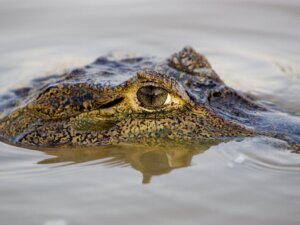

Written and verified by the biologist Cesar Paul Gonzalez Gonzalez
Reptiles are one of the most curious and peculiar taxonomic groups that exist, as their scaly appearance is very reminiscent of the famous dinosaurs. Although they don’t possess the immense size of these beings, there are still some species that are quite large and incredible. In the following article, we’ll tell you about the largest reptiles that exist.
The reptile group has been very successful in conquering both land and aquatic environments. For this reason, it’s possible to find them in almost every ecosystem in the world. Although they vary in size, some specimens can reach several meters in length. Keep reading to learn more.
Reptiles with incredible sizes
Reptiles are a diverse group that contains different species of lizards, snakes, crocodiles, chameleons, and iguanas. Although many of them are quite small and compact, some are capable of reaching impressive sizes. Discover the largest ones below.
1. Alligator snapping turtle (Macrochelys temminckii)
The alligator snapping turtle has one of the most frightening appearances when it comes to reptiles, as its shell has several spikes that are very reminiscent of certain dinosaurs. It usually has a length of 30 inches and weighs almost 175 pounds. It’s a carnivorous species that feeds on fish, birds, crustaceans, amphibians, and mammals. Its bite is so powerful that almost no other animal can resist it.
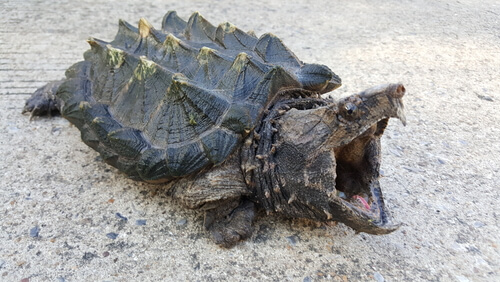
2. Indigo snake (Drymarchon corais)
The indigo snake is considered to be the largest known non-venomous snake, as it can exceed 6.5 feet in length. It’s a rather shy species that feeds on some birds, lizards, and even smaller snakes. Its bite isn’t toxic, but in humans, it could trigger a dangerous anaphylactic reaction.
3. Nile crocodile (Crocodylus niloticus)
The Nile crocodile is one of the largest reptiles in the world and is second only to the saltwater crocodile. It reaches a maximum size of almost 20 feet long and a weight of 1545 pounds, although few specimens reach these dimensions. However, thanks to its size and powerful bite, it’s considered one of the fiercest aquatic predators.
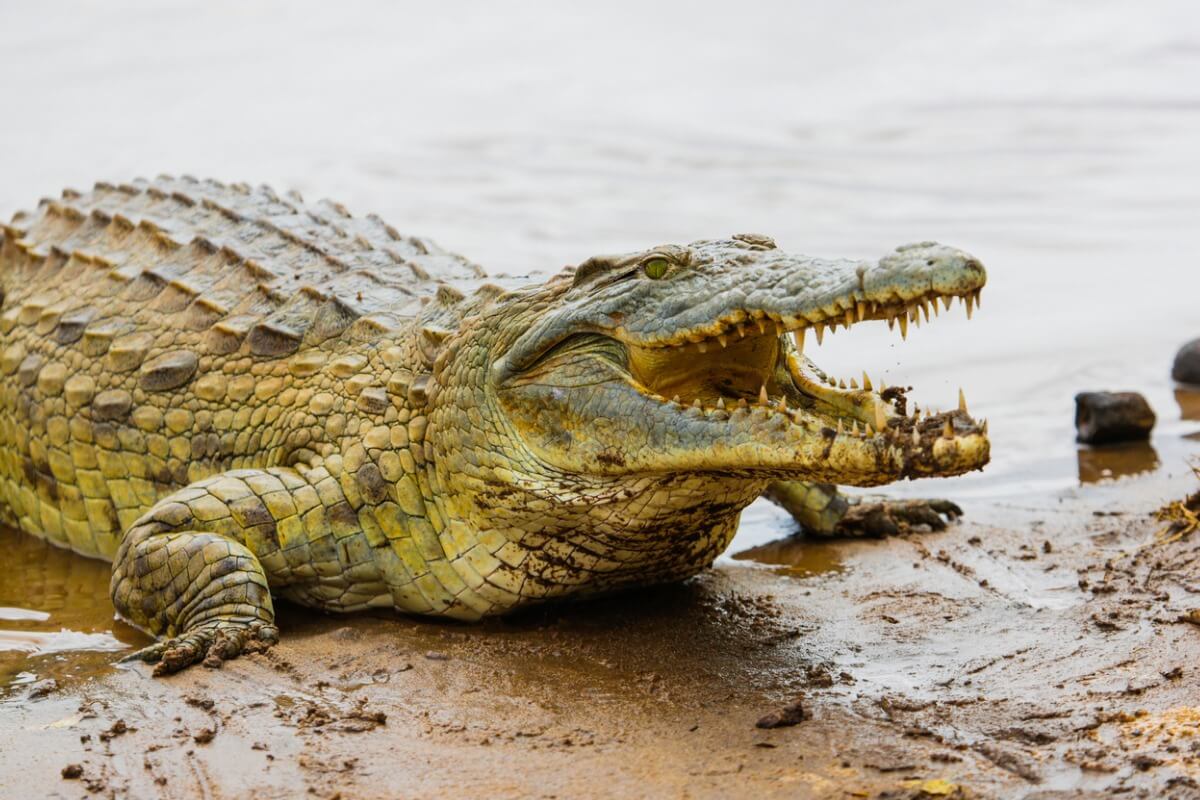
4. Gila Monster (Heloderma suspectum)
The Gila Monster stands out for its size and its ability to produce venom. Although it’s not the largest lizard in the world, it defends itself with a size of 23.5 inches long and a weight of 155 feet. In addition, it belongs to the only genus of lizards that’s capable of generating toxins and injecting them into its victims, which is why it has been the focus of attention of several researchers.
5. Gharial (Gavialis gangeticus)
Gharials are the closest relatives of crocodiles, which is possible to observe due to their close resemblance to each other. However, these reptiles are distinguished by their slender, elongated snout, which serves them well for fishing. Their body is almost 20 feet long, weighing between 350 and 550 pounds.
6. Green anaconda (Eunectes murinus)
The green anaconda is known for having an incredible size of between 6.5 and 23 feet long. It has become famous thanks to its curious constriction capacity, with which it traps and immobilizes its prey before devouring it. In fact, unlike other animals, the anaconda doesn’t crush its food before swallowing it. For this reason, its digestion usually takes weeks and it goes a long time without feeding again.
7. Leatherback sea turtle (Dermochelys coriacea)
Among sea turtles, the leatherback sea turtle is considered the largest of all. It exceeds 6.5 feet in length and weighs some 1325 pounds. Unlike other similar chelonians, its shell is made of soft connective tissue, which has earned it goes by the nickname leatherback.
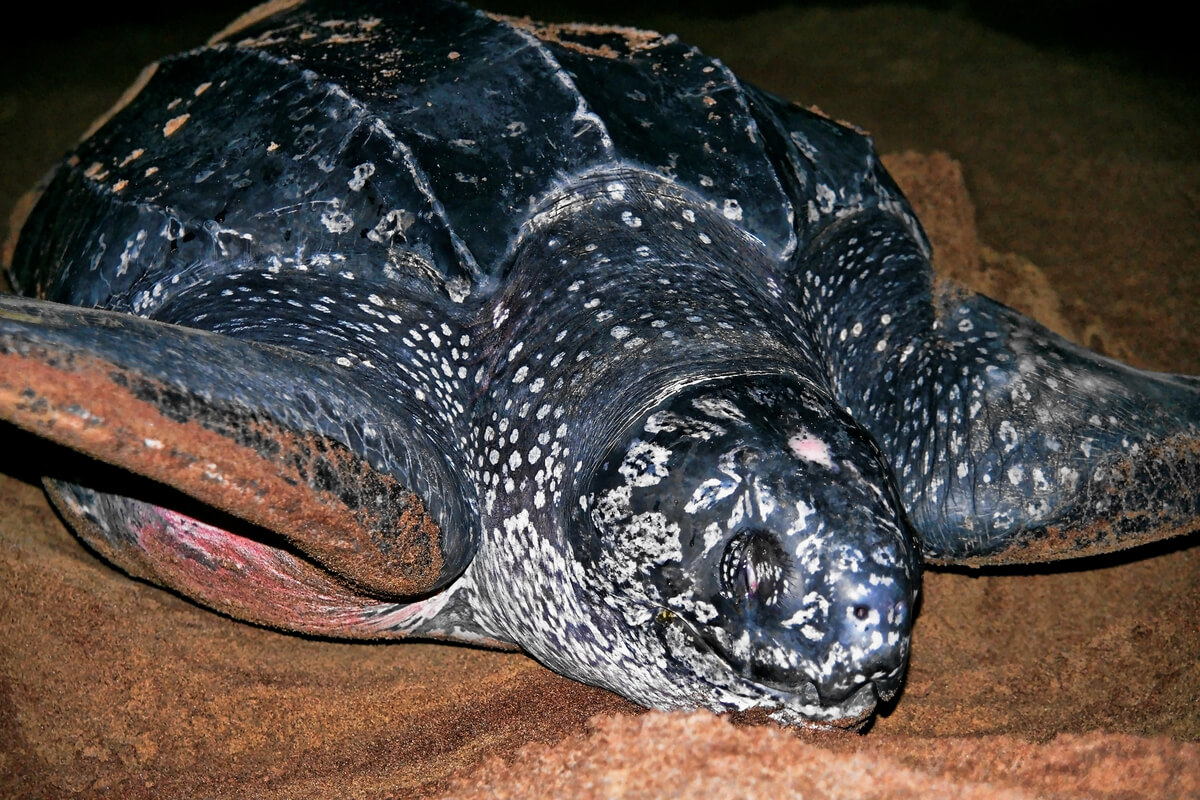
8. American crocodile (Crocodylus acutus)
As its name suggests, this species of crocodile is distributed throughout most of Central America. Its average size is between 10 and 16.4 feet long, but specimens of up to 6 20 feet have been recorded. Despite being one of the largest and fiercest reptiles in the world, its population is at risk due to the illegal skin trade.
9. Komodo dragon (Varanus komodoensis)
The Komodo dragon is considered the largest lizard in the world, as it has an average size of 10 feet long and weighs about 155 pounds. Thanks to its enormous appearance, it has become a super predator. However, the International Union for Conservation of Nature classifies it as an endangered species.
10. Saltwater crocodile (Crocodylus porosus)
The saltwater crocodile is the largest reptile in the world. It measures between 14.75 and 23 feet on average, although there are reports of specimens reaching 28 feet in length. It’s also a fierce and agile predator that moves fast both on land and in the water. For this reason, they’ve been considered the most dangerous crocodile species in existence.
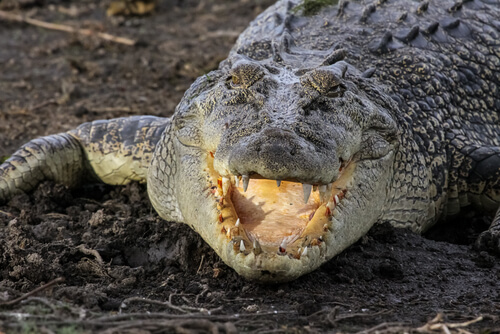
As you can see, there’s an enormous number of species that reach impressive sizes. Although they’ll never reach the same size as the ancient dinosaurs, this doesn’t prevent them from being fierce and dangerous predators.
Reptiles are one of the most curious and peculiar taxonomic groups that exist, as their scaly appearance is very reminiscent of the famous dinosaurs. Although they don’t possess the immense size of these beings, there are still some species that are quite large and incredible. In the following article, we’ll tell you about the largest reptiles that exist.
The reptile group has been very successful in conquering both land and aquatic environments. For this reason, it’s possible to find them in almost every ecosystem in the world. Although they vary in size, some specimens can reach several meters in length. Keep reading to learn more.
Reptiles with incredible sizes
Reptiles are a diverse group that contains different species of lizards, snakes, crocodiles, chameleons, and iguanas. Although many of them are quite small and compact, some are capable of reaching impressive sizes. Discover the largest ones below.
1. Alligator snapping turtle (Macrochelys temminckii)
The alligator snapping turtle has one of the most frightening appearances when it comes to reptiles, as its shell has several spikes that are very reminiscent of certain dinosaurs. It usually has a length of 30 inches and weighs almost 175 pounds. It’s a carnivorous species that feeds on fish, birds, crustaceans, amphibians, and mammals. Its bite is so powerful that almost no other animal can resist it.

2. Indigo snake (Drymarchon corais)
The indigo snake is considered to be the largest known non-venomous snake, as it can exceed 6.5 feet in length. It’s a rather shy species that feeds on some birds, lizards, and even smaller snakes. Its bite isn’t toxic, but in humans, it could trigger a dangerous anaphylactic reaction.
3. Nile crocodile (Crocodylus niloticus)
The Nile crocodile is one of the largest reptiles in the world and is second only to the saltwater crocodile. It reaches a maximum size of almost 20 feet long and a weight of 1545 pounds, although few specimens reach these dimensions. However, thanks to its size and powerful bite, it’s considered one of the fiercest aquatic predators.

4. Gila Monster (Heloderma suspectum)
The Gila Monster stands out for its size and its ability to produce venom. Although it’s not the largest lizard in the world, it defends itself with a size of 23.5 inches long and a weight of 155 feet. In addition, it belongs to the only genus of lizards that’s capable of generating toxins and injecting them into its victims, which is why it has been the focus of attention of several researchers.
5. Gharial (Gavialis gangeticus)
Gharials are the closest relatives of crocodiles, which is possible to observe due to their close resemblance to each other. However, these reptiles are distinguished by their slender, elongated snout, which serves them well for fishing. Their body is almost 20 feet long, weighing between 350 and 550 pounds.
6. Green anaconda (Eunectes murinus)
The green anaconda is known for having an incredible size of between 6.5 and 23 feet long. It has become famous thanks to its curious constriction capacity, with which it traps and immobilizes its prey before devouring it. In fact, unlike other animals, the anaconda doesn’t crush its food before swallowing it. For this reason, its digestion usually takes weeks and it goes a long time without feeding again.
7. Leatherback sea turtle (Dermochelys coriacea)
Among sea turtles, the leatherback sea turtle is considered the largest of all. It exceeds 6.5 feet in length and weighs some 1325 pounds. Unlike other similar chelonians, its shell is made of soft connective tissue, which has earned it goes by the nickname leatherback.

8. American crocodile (Crocodylus acutus)
As its name suggests, this species of crocodile is distributed throughout most of Central America. Its average size is between 10 and 16.4 feet long, but specimens of up to 6 20 feet have been recorded. Despite being one of the largest and fiercest reptiles in the world, its population is at risk due to the illegal skin trade.
9. Komodo dragon (Varanus komodoensis)
The Komodo dragon is considered the largest lizard in the world, as it has an average size of 10 feet long and weighs about 155 pounds. Thanks to its enormous appearance, it has become a super predator. However, the International Union for Conservation of Nature classifies it as an endangered species.
10. Saltwater crocodile (Crocodylus porosus)
The saltwater crocodile is the largest reptile in the world. It measures between 14.75 and 23 feet on average, although there are reports of specimens reaching 28 feet in length. It’s also a fierce and agile predator that moves fast both on land and in the water. For this reason, they’ve been considered the most dangerous crocodile species in existence.

As you can see, there’s an enormous number of species that reach impressive sizes. Although they’ll never reach the same size as the ancient dinosaurs, this doesn’t prevent them from being fierce and dangerous predators.
All cited sources were thoroughly reviewed by our team to ensure their quality, reliability, currency, and validity. The bibliography of this article was considered reliable and of academic or scientific accuracy.
- Prado-Franceschi, J., & Hyslop, S. (2002). South American colubrid envenomations. Journal of Toxicology: Toxin Reviews, 21(1-2), 117-158.
- Peters, J. A. y Orejas-Miranda, B. (1970). Catalogue of the neotropical Squamata: Part I. Snakes. United States National Museum Bulletin 297:1-347.
- Canseco-Márquez, L. & Gutiérrez-Mayén (2010). Anfibios y reptiles del Valle de Tehuacán-Cuicatlán. CONABIO.
- Unión Internacional para la Conservación de la Naturaleza (UICN). (2021) Tuna species recovering despite growing pressures on marine life – IUCN Red List. Recuperado el 30 de marzo de 2022, disponible en: https://www.iucn.org/news/species/202109/tuna-species-recovering-despite-growing-pressures-marine-life-iucn-red-list
This text is provided for informational purposes only and does not replace consultation with a professional. If in doubt, consult your specialist.








